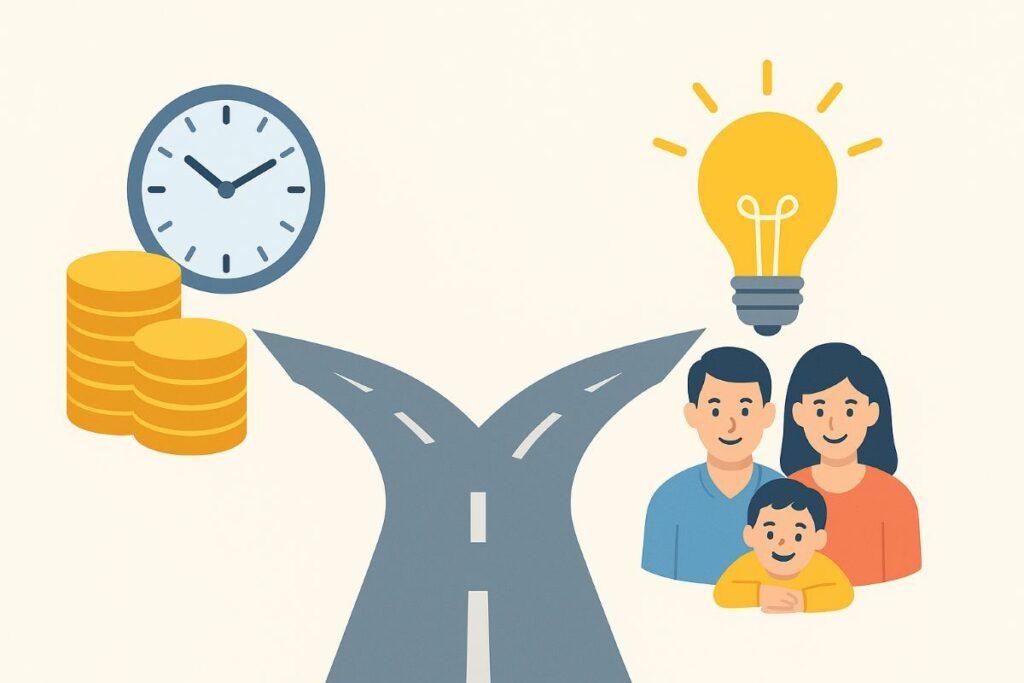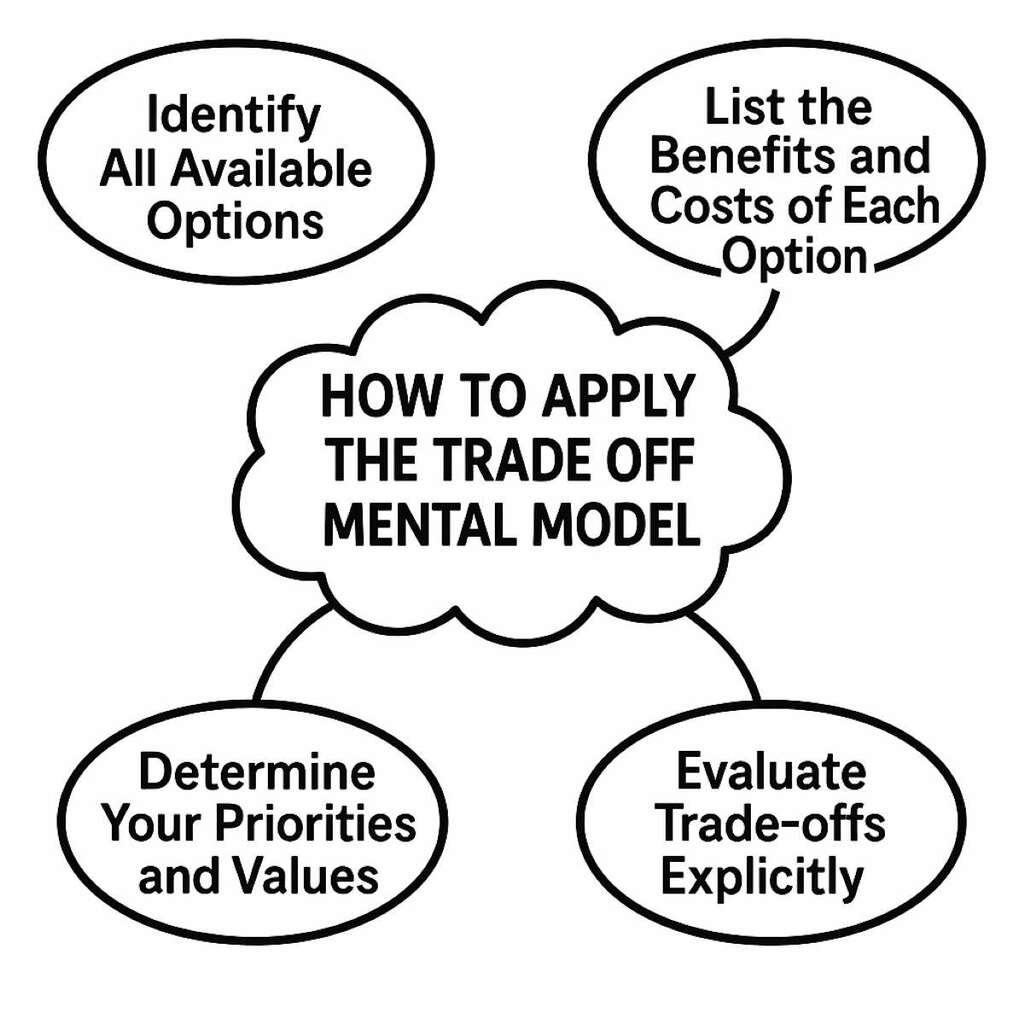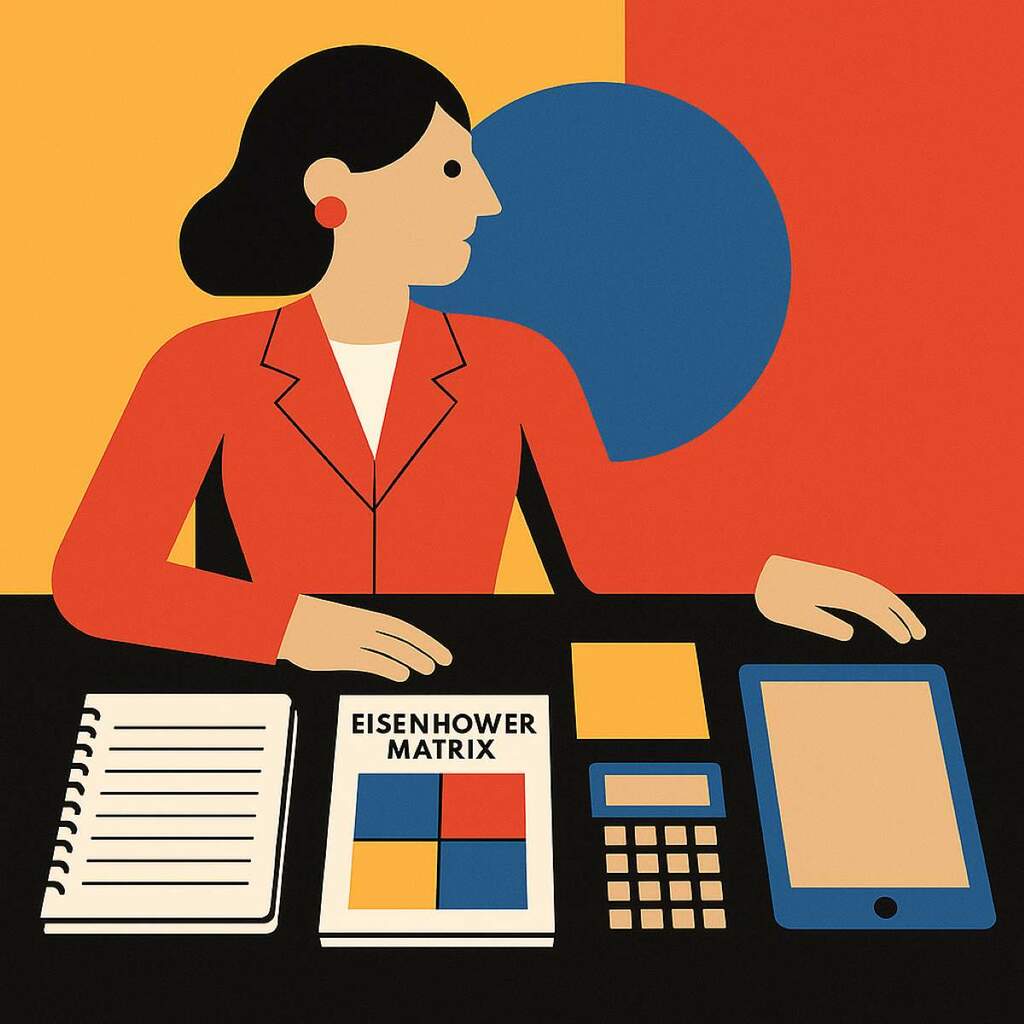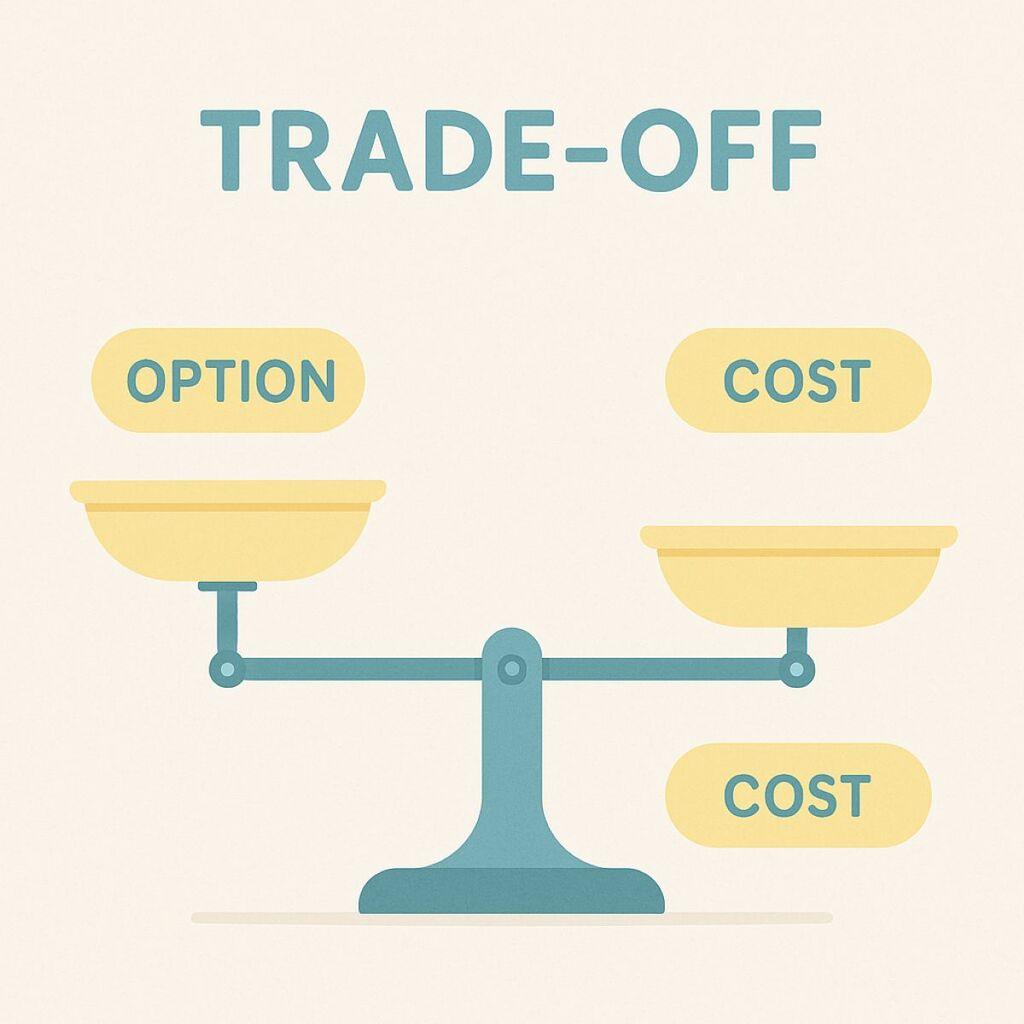Every day, we make choices that shape our lives. The trade-off mental model helps us make these decisions with confidence. It lets us see what we gain and what we sacrifice.
Imagine you’re at a crossroads. One path might offer a high-paying job but long hours. The other might give you work-life balance but less money. This model, inspired by thinkers like Thomas Sowell, helps you choose based on your values. It’s about making choices that reflect what’s important to you.
This mental model isn’t just for big decisions. It’s a tool for everyday choices. Startups might choose speed over quality, while governments might balance economic growth and environmental impact. By using it, you avoid the search for “perfect” solutions.
Instead, you focus on choices that align with your values, reducing regret and increasing satisfaction.
What Is the Trade Off Mental Model?
The trade off mental model is a cognitive framework that acknowledges a fundamental truth: you can’t have everything in this world. Every choice involves sacrificing something else as people make decisions within a complex system.
When you choose to spend time and money on a vacation, you trade off the ability to invest that money elsewhere. When you decide to work late, you trade off valuable time with family or friends.
The trade off mental model helps us visualize what we gain versus what we give up with each decision
At its core, this mental model is about opportunity cost – the value of the next best alternative that you give up when making a choice. By explicitly recognizing these trade-offs, you can:
- Make more deliberate, conscious decisions
- Reduce decision regret by acknowledging what you’re giving up upfront
- Align your choices with your true priorities
- Avoid the trap of trying to optimize everything simultaneously
The trade off mental model doesn’t just apply to individual decisions – it’s relevant to organizations, governments, and societies. Economic policies, business strategies, and resource allocations all involve trade-offs that must be carefully weighed.
Why the Trade-Off Mental Model Boosts Decision-Making Clarity

The trade-off mental model changes how we make decisions. It shows us that we can’t have everything because resources are limited. This idea, based on economics, tells us that every choice has a downside.
A 2023 study in the Journal of Behavioral Decision Making found something interesting. People who thought about trade-offs regretted their decisions less. By knowing what they gain and lose, they make clearer choices.
This way of thinking is very useful in big decisions. Imagine a small business owner choosing between marketing and improving their product. They can see the benefits of each option. This helps them make a choice that’s good for the long run.
Companies like Apple use this model too. They focus on making new and better products instead of saving money. This way, they make decisions that are smart and strategic, not just based on what feels good right now.
When to Use This Model
The trade off mental model is particularly valuable in these situations:
Resource Allocation Decisions
When you have limited resources (time, money, attention) and must decide how to distribute them across competing priorities.
Strategic Planning
When mapping out long-term goals and determining which opportunities to pursue and which to decline.
Product Development
When balancing features, quality, cost, and time-to-market in creating new products or services.
Life Choices
When making major life decisions like career changes, relocations, or relationship commitments.

The trade off mental model helps clarify options at critical decision points
Common Cognitive Biases That Distort Trade-Off Thinking
Even when we know about trade-offs, our minds can play tricks on us. Loss aversion makes us worry more about losing something than gaining something. The sunk cost fallacy makes us keep going because we’ve already spent time or money. And status quo bias makes us stick with what we know, even if it’s not the best choice.
By understanding these biases, we can make better choices. We can avoid letting our emotions cloud our judgment. This way, we can make decisions that are truly in our best interest.
Real-World Examples of the Trade Off Mental Model
To truly understand the power of the trade off mental model, let’s explore how it applies across different domains:
Career Decisions
Consider someone weighing a job offer with a higher salary but longer hours against their current position with more flexibility but lower pay. The trade off mental model helps them explicitly identify what they value most:
| Option | Benefits | Costs | Trade-offs |
| Higher-paying job | Increased income, career advancement, prestige | Less personal time, higher stress, longer commute | Trading work-life balance for financial security |
| Current job | Flexibility, familiar environment, shorter hours | Limited growth, lower income, potential stagnation | Trading financial growth for quality of life |
By explicitly mapping these trade-offs, the person can make a decision that aligns with their true priorities rather than being swayed by a single factor like salary.
Business Decisions
Companies constantly face trade-offs in their strategic decisions. Consider a software company deciding whether to release a product quickly with fewer features or delay the launch to include more functionality:

Business trade-off analysis between time-to-market and feature completeness
Using the trade off mental model, the company might consider:
- Early release: Gains market share and early revenue but risks disappointing users with limited features
- Delayed release: Delivers a more complete product but allows competitors to establish themselves first
- Phased approach: Balances immediate presence with ongoing improvements but requires careful resource management
Environmental Policy
Environmental decisions often involve complex trade-offs between economic growth and sustainability. Consider a government evaluating a new manufacturing plant:
Economic Benefits
- Job creation
- Tax revenue
- Economic development
- Infrastructure improvements
Environmental Costs
- Increased pollution
- Resource consumption
- Habitat disruption
- Long-term climate impact
The trade off mental model helps policymakers acknowledge these competing interests and seek balanced solutions rather than pretending there are no downsides to their preferred approach.
How to Apply the Trade Off Mental Model
Understanding the concept of trade-offs is one thing; applying it effectively is another. Here’s a step-by-step process for using this mental model in your decision-making:

A systematic approach to applying the trade off mental model
1. Identify All Available Options
Begin by listing all possible choices in your specific situation. Be comprehensive – sometimes the best option isn’t the most obvious one. For complex decisions, research may be needed to uncover all alternatives.
2. List the Benefits and Costs of Each Option
For each alternative, identify what you gain and what you give up. Consider both tangible factors (money, time) and intangible ones (satisfaction, stress, relationships). Be honest about the downsides of options you’re initially drawn to.
3. Determine Your Priorities and Values
What matters most to you in this decision? Rank your priorities to create a framework for evaluating trade-offs. Your values serve as the foundation for making choices aligned with your true goals.
4. Evaluate Trade-offs Explicitly
Now comes the heart of the model: explicitly recognize what you’re giving up with each choice. Create a decision matrix that maps options against your priorities, assigning weights to different factors based on their importance to you.
| Decision Criteria | Weight (1-10) | Option A (Score 1-10) | Option B (Score 1-10) | Option C (Score 1-10) |
| Financial impact | 8 | 9 | 6 | 4 |
| Time requirement | 7 | 3 | 7 | 9 |
| Growth opportunity | 9 | 8 | 9 | 5 |
| Alignment with values | 10 | 6 | 8 | 9 |
| Weighted Total | – | 216 | 246 | 219 |
5. Make a Conscious Choice
Based on your analysis, make a decision with full awareness of the trade-offs involved. This doesn’t eliminate the downsides of your choice, but it does reduce regret because you’ve already acknowledged what you’re giving up.
Case Study: Applying the Trade-Off Model to Career Decisions
Let’s examine how someone might apply this model when deciding whether to accept a promotion that requires relocation:

Visualizing the trade-offs in a major career decision
By working through this process, the person might realize that while the promotion offers financial benefits, the trade-offs in terms of family disruption and quality of life don’t align with their core values. This clarity helps them make a decision they can feel confident about, even if it means turning down an opportunity that looks good on paper.
Common Mistakes to Avoid When Using the Trade Off Mental Model
Even with a structured approach, people often make these mistakes when applying the trade off mental model:
Ignoring Hidden Costs
Many decisions have non-obvious costs that only become apparent later. Take time to consider second-order effects and long-term implications.
Overvaluing the Immediate
Our brains are wired to prioritize immediate benefits over future ones. Consciously counteract this bias by giving appropriate weight to long-term considerations.
False Equivalence
Not all trade-offs are equal. Avoid treating minor inconveniences as equivalent to major sacrifices by quantifying impacts when possible.
Perfectionism
Seeking the “perfect” option with no downsides leads to decision paralysis. Accept that all choices involve trade-offs and focus on finding the best balance.
Neglecting Personal Values
Without clarity on your values, you may make trade-offs that look good objectively but don’t align with what truly matters to you.
Failure to Reassess
As circumstances change, the optimal trade-offs may shift. Periodically reevaluate your decisions as new information becomes available.
Practical Implementation: 5 Steps to Better Trade-Off Decisions

Ready to put the trade off mental model into practice? Here are five actionable steps you can take today:
- Create a decision journal – Document important decisions, the trade-offs you considered, and your reasoning. Review periodically to improve your decision-making process.
- Use a trade-off matrix template – I suggest the Eisenhower matrix to structure your thinking with a template that forces you to explicitly identify what you’re giving up with each option.
- Practice opportunity cost thinking – For every “yes” you give, identify what you’re saying “no” to as a result. This builds the habit of trade-off awareness.
- Conduct pre-mortems – Imagine your decision turned out poorly and work backward to identify potential trade-offs you might have overlooked.
- Seek diverse perspectives – Others may spot trade-offs you’ve missed due to your biases or blind spots. Actively solicit input from people with different viewpoints.
Frequently Asked Questions About the Trade Off Mental Model
How is the trade off mental model different from cost-benefit analysis?
While related, they have different emphases. Cost-benefit analysis typically focuses on quantifying and comparing the total costs and benefits of a single option to determine if it’s worthwhile. The trade off mental model specifically highlights what you’re giving up by choosing one option over another, often comparing multiple alternatives simultaneously. It also places greater emphasis on subjective values and priorities that may not be easily quantifiable.
Can the trade off mental model help with everyday decisions?
Absolutely! While it’s particularly valuable for major decisions, the trade off mental model can improve even routine choices. For example, deciding how to spend your evening involves trade-offs between relaxation, productivity, social connection, and other values. By being mindful of these trade-offs, you can make choices more aligned with your priorities and reduce decision regret.
How do I handle emotional aspects of trade-offs?
Emotions are valid inputs to decision-making, not obstacles to be overcome. The trade off mental model should incorporate emotional considerations alongside more objective factors. Ask yourself: “How will I feel about this trade-off not just today, but a week, month, or year from now?” This temporal perspective can help balance immediate emotional reactions with longer-term emotional well-being.
What if I’m facing a decision with too many variables to consider?
Complex decisions with numerous variables can be overwhelming. In these cases:
- Focus first on identifying your top 3-5 priorities to simplify the analysis
- Group related factors into broader categories
- Consider using a decision tree to break down sequential choices
- Remember that perfect analysis is impossible – aim for “good enough” decision-making with the most important factors
How does the trade off mental model relate to opportunity cost?
The opportunity cost mental model is a central concept within the trade off mental model. It represents the value of the next best alternative that you give up when making a choice. The trade off mental model expands on this by providing a framework for systematically identifying, evaluating, and comparing these opportunity costs across multiple options and dimensions. It helps make the abstract concept of opportunity cost concrete and actionable in decision-making.

Embracing trade-offs leads to more confident, authentic decisions
Conclusion: Embracing the Reality of Trade-Offs
The trade-off mental model is more than a tool—it’s a mindset. It helps you make choices with clarity and purpose. Whether you’re a tech entrepreneur, a parent, or a student, it guides you to decisions that reflect your values.
A 2023 McKinsey Quarterly report found that companies using this model saw a 20% improvement in strategy. By embracing trade-offs, you move away from the idea of “having it all.” Instead, you make choices that bring satisfaction and reduce regret.
Start using the trade-off mental model today. Choose one decision, big or small, and weigh what you gain against what you give up. Use a decision journal or matrix to set your priorities. As your situation changes, revisit your choices.
Michael Porter, a Harvard Business School professor, said, “The essence of strategy is choosing what not to do.” With this model, you’ll make smarter decisions and live more authentically. You’ll be confident in the paths you choose.
“The essence of strategy is choosing what not to do.” – Michael Porter
Related Posts
- What is The Reputation Fragility Mental Model? – March 24, 2025
- What is The Recency Mental Model? – March 24, 2025


